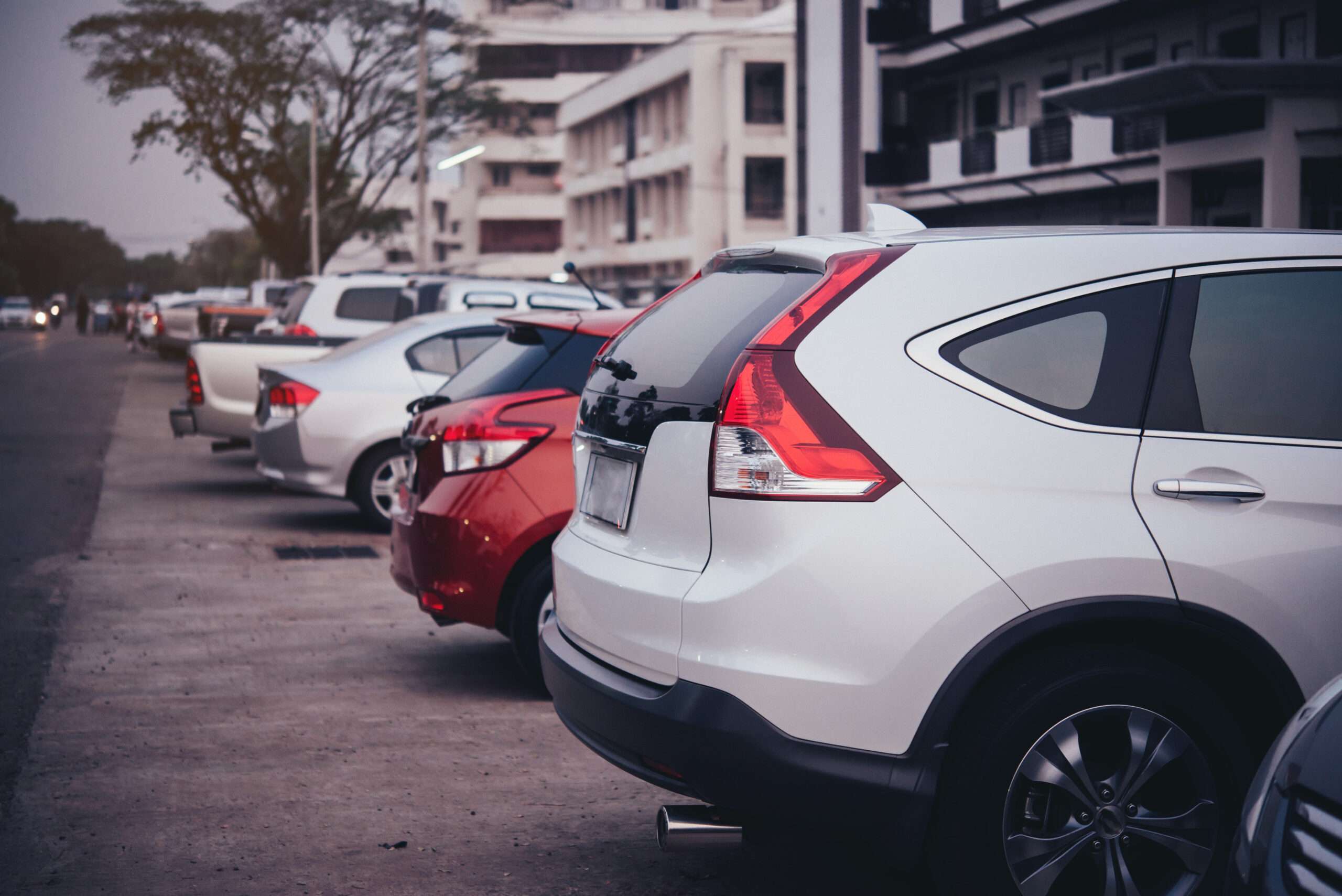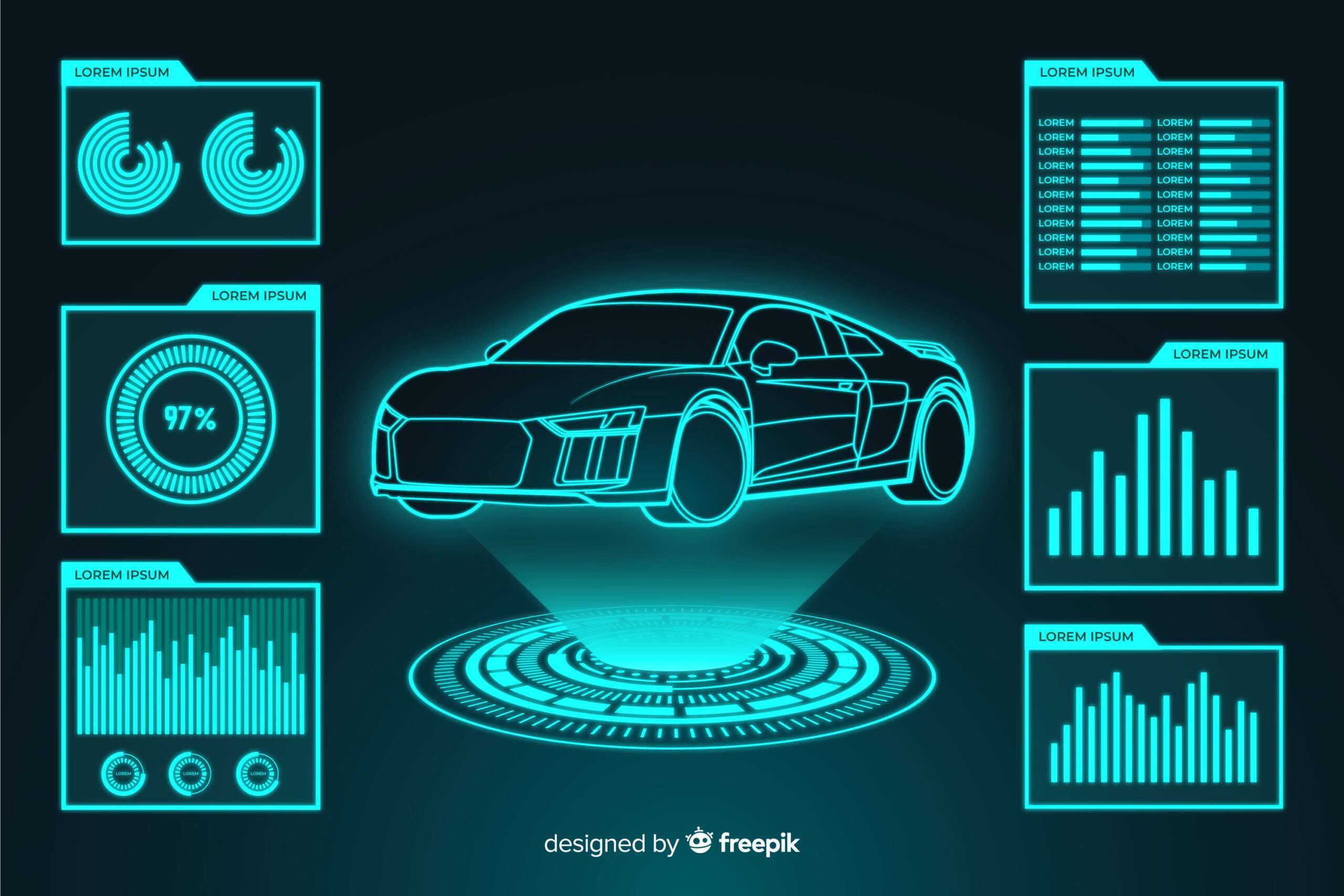Introduction: Beyond the Showroom Shine—The Heart of Your Dream Vehicle
Welcome, fellow motorheads, discriminating drivers, and soon-to-be proud car owners! Having been a seasoned voice in the field of all things on wheels, I have had the honor of guiding many people across one of the most fascinating, yet sometimes intimidating, paths: the search for their ideal car. It’s an emotional investment, a declaration of personal style, and a dedication to many miles of memories—not only a purchase.
Finding “the one” in a market full of options—from tough off-road beasts to electric urban commuters—can feel like looking for a needle in a haystack. However, not to worry! This isn’t just another checklist. Designed to empower you with the knowledge, techniques, and confidence required to negotiate the challenging world of car buying, this is your all-encompassing, insider’s guide. We are delving deeply into the very core of what makes a car really fun to drive, not only considering appearance or basic utility. Performance and handling define a car.
Why emphasize performance and handling so much? Since these are the qualities that define driving experience. They control how a car responds to your inputs, how it feels on twisting roads, how boldly it takes corners, and finally how much pure delight you get from every trip. Understanding these components is critical whether your dream is of a strong SUV elegantly traversing difficult terrain or a sleek sports car carving apexes.
This comprehensive guide will equip you with useful advice, professional knowledge, and a methodical approach so that your dream car is not only a fantasy but a real possibility that really fits your driving goals. Let’s start this exciting journey right together!
Phase 1: Defining Your Automotive Desires—The Soul-Searching
The most important phase starts before you even visit a dealership or peruse an online classified: self-evaluation. To you, what is a “dream car”? This is about what actually excites and satisfies your driving needs and wants, not what others expect.
1. Realistic Budgeting: Grounding Your Dream
First of all, let us address your budget—a non-negotiable. This represents the entire cost of ownership rather than only the sticker price.
Purchase Price: What’s your reasonable upper limit for the car itself? Think about new vs. used cars; particularly with regard to depreciation, used ones provide major savings.
Will you pay with finance or cash? If financing, consider down payments, loan terms, and interest rates. Before visiting a dealership to learn your actual purchasing power and negotiate from strength, pre-approval by your bank or credit union will help. (Source: [Link to a respectable car loan pre-approval financial advice website like Bankrate or nerdWallet])
Before you buy, get quotes for insurance. Premiums can be greatly influenced by high-performance cars, some brands, and even particular colors.
Maintenance and repairs are required of every vehicle. Find out how often models you’re looking at require maintenance. Higher service costs sometimes accompany luxury or high-performance and handling cars. (Interlink: [Link to an internal blog entry on “Understanding Vehicle Maintenance Costs”])
Think of the expected fuel economy and the type of fuel—petrol, diesel, EV, or hybrid. A performance and handling car might call for premium gasoline.
Registration, Taxes & Fees: Not often considered costs that vary by location are these ones.
Create a thorough spreadsheet detailing all possible expenses in practical terms. Tell yourself straightforwardly what you could reasonably afford long-term, not only initially.
Two Integrations of Lifestyle: Your Car as an Extension of You
Your dream car should fit very well into your daily existence.
Are daily commutes short city driving, long highway stretches, or a combination? This affects comfort priorities and fuel economy needs.
Family & Travelers: How often will you typically carry passengers? Are child seat anchors something you need? This determines features related to safety and seating capacity.
Do you haul groceries for a large family, sports equipment, or do-it-yourself tools? Think about boot room, folding chairs, and roof rack possibilities.
Driving Environment: Do you have hot summers, snowy winters, poor rural roads, or smooth metropolitan highways? This affects ground clearance, tire selection, FWD, RWD, AWD, and drivetrain.
While a sleek sports car might be your ideal, is it sensible for your daily parking conditions or rough roads? Strike a balance.
Practical Tip: Consider your most frequent travels and average weekly schedule. See yourself engaged in these activities alongside the cars on your shortlist.
3. The Value of “Why”: Clearly Specifying Your Main Driving Needs
This is where handling and performance really pay off. For what main use does this car serve you?
Thrill Seeker: Do you yearn for exact steering, explosive acceleration, and a visceral link to the road? You probably give absolute performance, sharp handling, and maybe a sporty exhaust note top priority.
Comfort & Luxury: Your top concerns are a smooth, quiet ride, soft interior, and easy long-distance cruising. You’ll concentrate on premium features, noise isolation, and sophisticated suspension.
Do you need a car that can confidently handle varied terrain, go off-road, or tow? Key becomes ground clearance, a strong drivetrain, and towing capacity.
Efficiency and economy: Your main motivator is low running costs and little environmental impact. Top of mind will be hybrids, electric cars, and very fuel-efficient smaller engines.
Safety and Reliability: Is your main objective peace of mind? Search for top safety ratings, dependability history, and advanced driver-assistance technologies.
Write down your three most “must-have” traits in practical form. For weekend drives, for instance, “Excellent performance and handling; spacious and comfortable for family trips; reliable and fuel-efficient for daily commute.”
Phase 2: Uncovering Performance and Handling the Deep Dive
Let us now break out the fundamental components defining the driving behavior of a car. This is the place your ideal car really comes to life.
Managing Performance
Performance goes beyond mere speed to include the vehicle’s capacity for acceleration, braking, and effective speed maintenance.
Torque (Nm/LB-ft) and Horsepower (HP):
Horsepower has a bearing on the top speed possible for the car. Generally speaking, more HP translates into faster acceleration and top speed.
Important for towing or hauling heavy loads, torque is the rotational force that propels the car from a stop and determines its pulling power. In daily driving, a car with good torque feels responsive and effortless.
Advice: Try not to become obsessed just with HP figures. In city driving, a car with high torque at low RPMs can feel far faster and more responsive than one with high peak HP that only kicks in at high RPMs. If at all possible, view the power and torque curves—found in thorough reviews.
Acceleration (0–100 km/h or 0–60 mph): This benchmark provides a reasonable estimate of the car’s quick speed-up capability.
Think about your usual driving. For highway merging or just enough power for city traffic, do you need blazing acceleration? Don’t pay too much for performance you won’t use.
Often disregarded but equally important as acceleration is the braking system.
Look for disc brakes—particularly ventilated discs for improved cooling—on all four of the wheels. Usually offering better stopping power and fade resistance are larger rotors and multi-piston calipers.
Standard is ABS (Anti-lock Braking System), but for best performance in emergency stops, look for EBD (Electronic Brake-force Distribution) and Brake Assist.
Practical Tip: Watch brake feel very closely during a test drive. Is it spongy or firm and progressive? Does the car stop boldly without too much dive?
Arguably more important than raw HP is the power-to-weight ratio. Because of their better power-to-weight ratio, a lighter car with less horsepower can often outperform a heavier car with more horsepower.
Practical Tip: Look up the curb weight of possible cars. Generally speaking, a smaller car uses less gasoline and feels more nimble.
Transmission:
Often chosen by aficionados looking for a direct connection, manual (MT) offers maximum driver engagement and control.
Managing Understanding
Automatic (AT): Always improving in efficiency; handy for traffic.
Though it can feel less interesting, Continuous Variable Transmission (CVT) offers outstanding fuel economy and smooth, stepless acceleration.
Often found in high-performance and handling cars, dual-clutch transmission (DCT) provides quick, flawless shifts.
Practical Tip: Think about how you drive. A manual might be your dream if you enjoy having complete control and feeling connected. Modern automatic or DCT might be better if efficiency and convenience are top priorities.
Handling explains how a car moves around corners, over hills, and during maneuvers. It’s about drive, confidence, responsiveness, and consistency.
Steering System:
Feel: Is city parking light and easy or firm and communicative for those driven with passion?
The car responds to your steering inputs exactly and fast. Excellent handling requires minimal lag.
Does the steering wheel send signals about tire grip and road surface back to your hands? For confident driving, this is absolutely vital.
Practical Tip: Look for a safe, open area on your test drive to turn. Pay close attention to the car’s tracking and required degree of input.
The unspoken hero of both comfort and performance and handling is the suspension system.
Types: Usually providing better ride comfort and handling than solid axle designs, independent suspension on all four wheels. Research particular styles, including MacPherson struts, double wishbones, or multi-link systems.
Damping: How effectively does the suspension absorb control body roll and bumps? Certain cars have adaptive dampers to change stiffness.
Body Roll: How much does the vehicle slink in corners? Usually, less body roll denotes sportier control.
Practical Tip: During your test drive, drive over a variety of road surfaces, including smooth, rough patches and speed bumps. Analyze how well comfort and control balance each other.
Tires: Your car’s only component that comes into direct touch with the road!
Winter tires are absolutely essential in cold climates; all-season tires balance grip with longevity, and performance tires give maximum grip.
Smaller sidewall, lower profile tires often provide better handling but a harsher ride.
The correct tires will improve the performance and handling of a vehicle. Think about budgeting for good-quality tires, particularly if you give spirited driving top priority. [Link to a credible tire review website such as Tire Rack or Consumer Reports tires section.] Backlink
The front-to-rear axle weight distribution of the car determines its overall weight.
Common in FWD vehicles is front-heavy design. can cause understeer—that is, the car wants to go straight in corners.
Perfect for sports cars, balanced—that is, 50/50—promotes neutral handling.
While difficult to evaluate on a test drive, search for reviews addressing weight distribution since it greatly affects a car’s natural balance.
Better handling and less flex follow from a stiff chassis rigidity, allowing the suspension to operate effectively, so improving the platform.
Often discussed in professional reviews: Practical Tip Though not always, listen for creaks or rattles on bumps to sometimes suggest a less rigid construction.
FWD, RWD, AWD: Drivetrain
Front-wheel drive (FWD) offers effective packaging and traction in most conditions. Often understeers at the limit.
Often chosen for sportier Performance and Handling because of better weight transfer during acceleration and more balanced feel, Rear-Wheel Drive (RWD)
Particularly in higher-performance and handling vehicles, all-wheel drive (AWD) improves grip and stability and offers outstanding traction in slippery conditions. can add complexity and weight.
The practical advice is to match your driving style and climate to the drivetrain. AWD is quite helpful if you live somewhere covered in snow. RWD may be your choice if you enjoy lively dry road driving.
Phase 3: The Research Deep Dive: Developing Expert Buyer Skills
It’s time to delve into research once your tastes are clear and your awareness of performance and handling is honed.
1. Research Online: Your Virtual Showroom
Manufacturer Websites: For official specs, features, and model configurations, start here.
Sites for automotive reviews: Consult reliable, professional reviews. Go beyond mere ratings; pay close attention to how they characterize the performance and handling qualities.
Examples include MotorTrend, Top Gear, Auto Express (UK), and What Car? Car and Driver. Autocar (UK) here in the UK.
See what real owners have to say about their experience at consumer review websites. Though you should be aware of strong points, search for recurring themes.
Examples are Edmunds.com, Kelley Blue Book (KBB.com), and RepairPal for dependability statistics.
Join owner forums or Facebook groups dedicated to particular models. For knowledge on common problems, practical performance and handling techniques, and modification guidance, this is absolutely priceless.
Use web tools—such as Edmunds or KBB—to side-by-side compare specs.
Create a quicklist of three to five cars that seem to meet your needs. Read several reviews for every one looking for consistent comments on their performance and handling.

2. Reliability and Safety: Mental peace for your dream
Without dependability and safety, even a dream car can become a nightmare.
Consult outside groups for dependability ratings.
Based on owner surveys, consumer reports are quite good for comprehensive dependability statistics. [Link to Consumer Reports Automotive Reliability] Source
J. D. Power offers dependability studies grounded in long-term ownership. [Link to J.D. Power Vehicle Dependability Study] Source
RepairPal: By vehicle make/model, it provides common problems and average repair costs. [Link to RepairPal’s section on dependability] Backlink
Safety Ratings: Crucially important.
Safety data and crash test ratings are supplied by NHTSA, the National Highway Traffic Safety Administration (USA). [Link to NHTSA crash test ratings] Source:
Renowned for its demanding crash tests and “Top Safety Pick” awards, IIHS (Insurance Institute for Highway Safety—USA) [Link to IIHS safety ratings] sources
Equivalent to NHTSA/IIHS for European market vehicles is Euro NCAP (Europe). [Link to Euro NCAP safety ratings] source
ADAS, or advanced driver-assistance systems:
Look for tools including Adaptive Cruise Control, Lane Keeping Assist, Blind Spot Monitoring, Automatic Emergency Braking, and Rear Cross-Traffic Alert. These dramatically improve safety and may even lower insurance rates.
Practical Tip: Give vehicles with great dependability and safety records top priority. A dream car is not one that breaks down constantly or lacks contemporary safety features.
3. Resale Value: Future Thinking
Think about selling even as you’re preoccupied with buying. Some cars hold value better than others.
Strong resale value is known of some brands.
Condition: Excellent resale is much enhanced by a clean history and good maintenance.
Popularity: Generally speaking, high-demand models are more valuable.
Use KBB or Edmunds to investigate over a 3-5 year period approximated resale values for models you are considering.
Phase 4: Test Driving Your Future—Hands-On Experience
This is where your research finds expression. The test drive is a vital assessment rather than a joyride.
1.1 The Art of the Test Drive: Evaluate, not just drive!
Make appointments by phoning ahead to guarantee the car is ready and available.
Bring a checklist; depend not on memory. Note particular areas to review, particularly with relation to performance and handling.
Drive on the roads you usually use: highways, city streets, twisting roads, and sections with speed bumps.
Not overlooked are the conveniences: infotainment, climate control, seat adjustments, and visibility.
Review performance and handling, especially:
Acceleration: From a stop, what sensation results? Is it strong enough to merge on a highway?
Braking: Does the pedal hold firm? It stops how fast and precisely?
Is your steering light or heavy? To what degree is it precise? Does it provide helpful comments?
Suspension: How do potholes and bumps treat it? Is the ride either excessively floaty or too stiff?
Body Roll: Under a reasonable speed, how much does the car tilt when negotiating corners?
Listen for engine noise, road noise, and wind noise—that is, NVH. Feel vibrations across the pedals or steering wheel.
Check general sightlines, rearview mirror clarity, and blind spots.
Parking and negotiating tight areas: How simple is it?
Test drive your top two to three selections back-to-back to show variances.
Take your time; do not hurry. A test drive should last a minimum of twenty to thirty minutes.
Bring a friend; a second view is quite helpful.
If you’re serious about performance and handling, find a safe, empty road or a big parking lot (with permission) to test evasive maneuvers or quick acceleration/braking inside legal limits.
Two Pre-Purchase Inspections (PPI): Your Safety Net
A PPI by an independent mechanic for any used car is fixed, not negotiable. For a purchase of a used car, this is maybe the most crucial stage.
Why is it? Mechanical, structural, and electrical hidden problems—that you or even a dealership would overlook—can be found by a mechanic. Thousands in future repairs could be saved by this.
Procedure: Look for a respectable mechanic unrelated to the seller. Usually costing $100 to $200, the fee is a nominal investment for peace of mind.
The mechanic will give a thorough report covering any possible or present issues. Use this report to bargain for a lower price or, should the problems be too great, walk away.
Though it comes with a warranty, never skip a PPI for a used car. Though catching problems early on is always better, the warranty may not cover everything.
Phase 5: The Deal: Bargaining for Your Dream Vehicle Price
You’ve located the one. Let us now negotiate the best deal available.
Pricing Strategy: Information is Authority.
Research Market Value: To find the average selling price for your intended make, model, year, trim, and mileage in your area, use sites including KBB, Edmunds, and actual dealer listings (Autotrader, Cars.com).
Research the invoice price—what the dealer paid—versus MSRP (Manufacturer’s Suggested Retail Price) for new cars. This provides a negotiating baseline.
Your best leverage is patience and preparedness to walk away. You should not feel under pressure to buy right away.
Aim to negotiate the “out-the-door” price—which includes all taxes and fees—rather than just the car price.
Two: The Negotiator’s Dance
Start low and be realistic; based on your research, make a reasonable first offer somewhat below your target price.
Emphasize the total price; monthly payments by themselves should not divert your attention. Although payments would seem low from a longer loan term, you will pay more in interest.
If necessary, first negotiate the purchase price; then, talk about your trade-in. Otherwise, dealers have numerical manipulation power.
Decline Add-Ons: Initially, be firm but courteous in declining needless add-ons, including paint protection, VIN etching, extended warranties (unless extensively investigated and justified), etc., first. If you so want, you can go back over them later.
Financing Alternatives: Show your bank’s pre-approved loan here. Try to have the dealer beat it. Make sure, if at all possible, there are no unfavorable terms or hidden costs.
Practical Tip: Dealers are professionals. You don’t have to be, but being calm and informed gives you an advantage. Beforehand, hone your negotiating points.
Three H3: Review Every Line: Paperwork Scrutiny
Read every single line item before signing a sales contract. Verify the numbers line up with your negotiated price.
Fees: Ask about any fees you find incomprehensible. Are they inflated dealer fees or legitimate—that is, government taxes and registration?
Know what is covered, for what length of time, and whether any deductibles apply.
Advice: Don’t rush yourself. If you’re not sure about anything, seek explanation or perhaps bring the contract home to go over.
Phase 6: Loving Your Dream Car: After Purchase Bliss
Bravo! You have purchased your ideal vehicle. The trip of ownership starts right now.
First Steps Following Purchase:
Make sure your comprehensive insurance is active before leaving the lot.
Complete all required titling and registration forms.
Familiarize yourself with the owner’s manual—especially the maintenance schedule.
For a used car especially, a professional detail can begin your ownership with a perfectly immaculate car.
Set up a specific folder or digital file for all the paperwork on your car—title, registration, insurance, service records, etc.
02. Long-Term Care: Maintenance of Performance and Management of
Maintaining your dream car’s performance depends mostly on regular vehicle maintenance. [Link to internal blog article “An All-Inclusive Manual for Maintaining Perfect Condition of Your Vehicle”] Interlink
Follow the manufacturer’s advised service intervals for oil changes, tire rotations, fluid checks, and major repairs strictly. This is absolutely vital for maintaining handling and performance.
Regular fluid checks include engine oil, coolant, brake fluid, power steering fluid, and transmission fluid. Low or dirty fluids can drastically affect lifetime and performance.
Keep proper tire pressure; rotate tires often; check tread depth. Worn or incorrectly inflated tires directly affect handling and performance.
Have your brakes checked at regular intervals. Safety and best stopping ability depend on healthy brakes.
Pay attention to any odd sounds (clunks, squeaks) or changes in steering feel. These may point to steering or suspension problems compromising handling.
Listen to your car; any unusual sounds, vibrations, or smells should be looked at right away. Early discovery helps to avoid small problems turning into more serious ones.
Use the recommended octane gasoline. For performance and handling vehicles, this is often premium fuel; using lower octane can damage the engine.
Regular cleaning guards the paint and interior from damage. Maintaining cleanliness will enable you to identify early possible problems, including rust or fluid leaks.
Before you need an independent mechanic for significant repairs, find one you can rely upon. Establish rapport with a service center aware of the particular requirements of your vehicle, particularly if it is a high-performance and handling model.
Final Thought: The Road Ahead Using Your Dream Vehicle
The path to buying your ideal car—especially one where performance and handling are paramount—is a methodical but quite satisfying one. It requires knowledge, patience, and research as well as a sharp sense of what actually makes a car sing.
From realistic budgeting and lifestyle integration to the deep dive into performance and handling specifications, thorough research, critical test driving, and smart negotiation—you’re not just buying a car; you’re investing in an experience by carefully navigating the phases we have described.
Remember, the feeling your dream car makes every time you get behind the wheel defines more than just horsepower or lap times. It’s about the confidence it gives as you negotiate traffic, the excitement it offers on an open road, and the solace it offers on long trips. It’s about your flawless connection to the machine.
Having this guide as your road map will help you to make a wise choice that guarantees not only that the car you select satisfies your practical needs but also sparks your love of driving. In your well-selected dream car, savor the open road, the thrilling performance and handling, and the many adventures waiting for you. Good driving.
Source:
https://www.nerdwallet.com/, then navigate to “Auto Loans” or use their search bar for “car loan pre-approval.” You’ll likely find a guide or comparison.
Go to https://www.tirerack.com/ and navigate to “Tire Tests & Reviews.”
Visit https://www.goodyear.com/ and search for “tire care” or “maintenance.”














